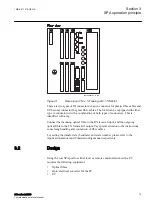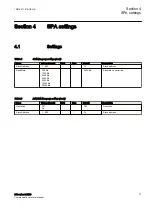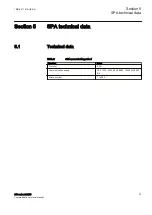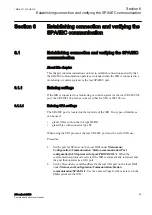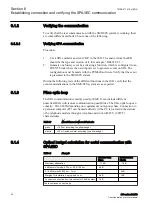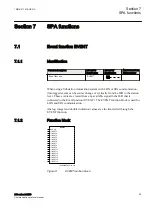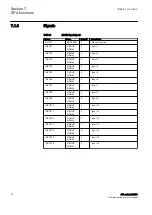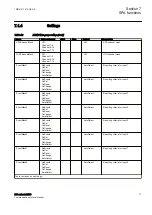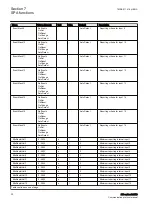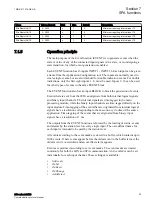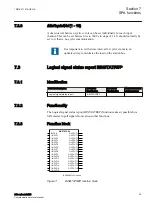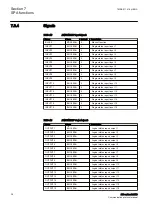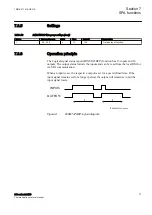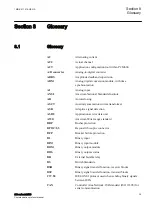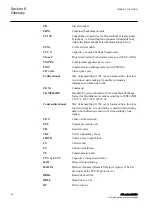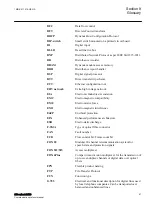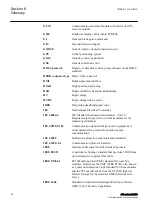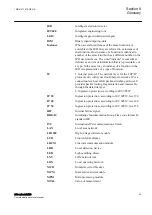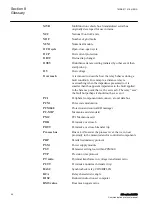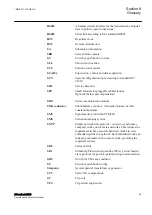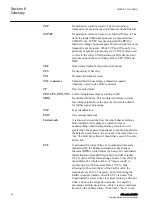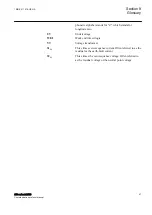
Name
Values (Range)
Unit
Step
Default
Description
MinRepIntVal13
0 - 3600
s
1
2
Minimum reporting interval input 13
MinRepIntVal14
0 - 3600
s
1
2
Minimum reporting interval input 14
MinRepIntVal15
0 - 3600
s
1
2
Minimum reporting interval input 15
MinRepIntVal16
0 - 3600
s
1
2
Minimum reporting interval input 16
7.1.5
Operation principle
M12807-6 v6
The main purpose of the Event function (EVENT) is to generate events when the
state or value of any of the connected input signals is in a state, or is undergoing a
state transition, for which event generation is enabled.
Each EVENT function has 16 inputs INPUT1 - INPUT16. Each input can be given
a name from the Application Configuration tool. The inputs are normally used to
create single events, but are also intended for double indication events. For double
indications, only the first eight inputs, 1–8, must be used. Inputs 9–16 can be used
for other types of events in the same EVENT block.
The EVENT function also has an input BLOCK to block the generation of events.
Events that are sent from the IED can originate from both internal logical signals
and binary input channels. The internal signals are time-tagged in the main
processing module, while the binary input channels are time-tagged directly on the
input module. Time-tagging of the events that are originated from internal logical
signals have a resolution corresponding to the execution cycle-time of the source
application. Time-tagging of the events that are originated from binary input
signals have a resolution of 1 ms.
The outputs from the EVENT function are formed by the reading of status, events
and alarms by the station level on every single input. The user-defined name for
each input is intended to be used by the station level.
All events according to the event mask are stored in a buffer, which contains up to
1000 events. If new events appear before the oldest event in the buffer is read, the
oldest event is overwritten and an overflow alarm appears.
Events are produced according to set event masks. The event masks are treated
commonly for both the LON and SPA communication. An
EventMask
can be set
individually for each input channel. These settings are available:
•
NoEvents
•
OnSet
•
OnReset
•
OnChange
•
AutoDetect
1MRK 511 418-UEN A
Section 7
SPA functions
650 series 2.2 IEC
33
Communication protocol manual

